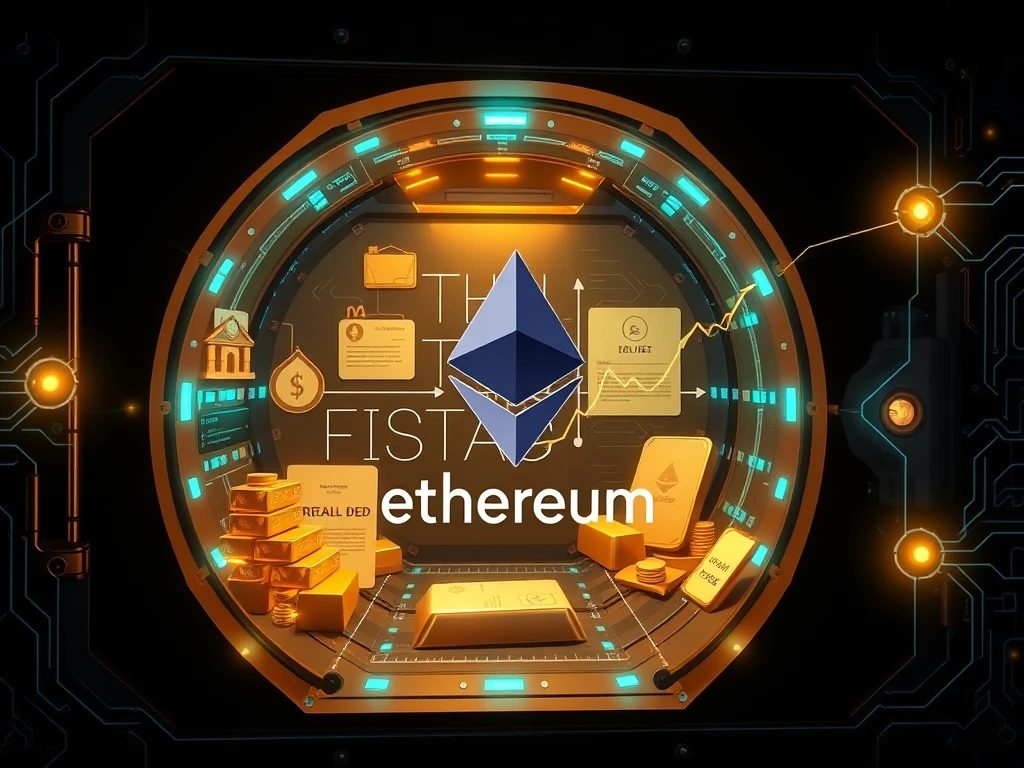Tokenization Market: Revolutionizing Finance as Private Credit Soars and Ethereum Dominates the $24 Billion RWA Sector

The world of finance is undergoing a monumental shift, and at its heart lies the tokenization market for Real-World Assets (RWAs). What was once a niche concept is rapidly transforming into a cornerstone of institutional finance, promising unprecedented efficiency and accessibility. This digital revolution is reshaping how traditional assets are owned, traded, and managed, inviting a new era of programmable finance.
The Astonishing Rise of Real-World Assets: Beyond Niche to Mainstream
Real-World Assets, or RWAs, represent tangible and intangible assets from the traditional financial world, such as real estate, commodities, and even private equity, brought onto the blockchain. This process, known as tokenization, creates digital representations of these assets, enabling them to be managed with the transparency and efficiency of decentralized ledgers.
According to a recent H1 2025 RWA Market Overview report, co-authored by RedStone, DeFi protocol Gauntlet, and data platform RWA.xyz, the Real-World Assets market has seen extraordinary growth. Excluding stablecoins, the market has surged by an astounding 380% since 2022, reaching a combined valuation of $24 billion. This expansion signifies a pivotal moment, as institutional players increasingly recognize the immense potential of integrating traditional finance with blockchain technology.
Unlocking Value: Why Private Credit is Dominating the RWA Landscape?
While much attention has been given to tokenized US Treasury bills, particularly with giants like BlackRock and Franklin Templeton entering the arena, the report highlights a surprising leader: private credit. This sector now accounts for over half of the entire RWA market, commanding a staggering $14 billion.
Private credit, often referred to as direct lending, involves non-bank financial institutions providing loans directly to companies. For private credit investors in the tokenized space, this offers attractive yields, typically ranging from 8% to 12%, significantly higher than many public credit markets. Products like Apollo’s ACRED fund exemplify this trend, demonstrating the appeal of these high-yield opportunities.
The tokenization of private credit brings several transformative benefits, enhancing a market historically challenged by illiquidity and slow settlement:
- Enhanced Settlement Speed: Transactions can be settled in minutes, not days.
- Increased Liquidity: Fractional ownership opens up the market to a broader investor base.
- Lower Barriers to Entry: Smaller investment amounts become feasible.
- Fractional Participation: Investors can own a piece of high-value assets.
These improvements are crucial, as private credit markets have historically been exclusive and illiquid. Tokenization is democratizing access and streamlining operations, making it a powerful force in the RWA space.
Ethereum RWA Dominance: The Unchallenged Leader in Tokenization
Despite the rise of faster and more scalable blockchains, Ethereum continues to stand as the undisputed leader in the tokenized RWA sector. RedStone’s report confirms Ethereum RWA dominance, with the network hosting approximately $7.5 billion in tokenized value across 335 products by mid-2025. This accounts for a significant 59% of the total market, solidifying its position as the preferred platform for institutional-grade tokenization.
Ethereum’s robust infrastructure, proven security, and extensive developer ecosystem contribute to its ‘institutional standard’ status. The launch of ‘Etherealize’ in January 2025, an Ethereum Foundation initiative aimed at fostering greater institutional participation on-chain, underscores a strategic push to maintain and expand this leadership. This proactive engagement further strengthens Ethereum’s appeal for large-scale RWA deployments.
Navigating the Expanding RWA Market: Who Are the Challengers?
While Ethereum holds a commanding lead, the broader RWA market is seeing healthy competition with other high-performance blockchains making significant strides. These networks are carving out their niches, particularly in areas requiring high transaction throughput or specialized functionalities.
Here’s a snapshot of the emerging landscape as of June:
| Blockchain | Tokenized Assets (June) | Key Highlights |
|---|---|---|
| Ethereum | ~$7.5 Billion (59%) | Institutional standard, Etherealize initiative |
| Solana | ~$351 Million | High-performance challenger, strong in tokenized Treasury |
| Aptos | ~$349 Million | First non-EVM for BlackRock’s BUIDL fund |
| Avalanche | ~$188 Million | Hosts KKR’s tokenized fund |
| XRP Ledger | ~$157 Million | Emerging as a “regulated newcomer” |
This diversification across multiple blockchains indicates a maturing RWA market, where different networks cater to specific use cases and institutional preferences.
The Future of the Tokenization Market: What’s Next for Digital Finance?
The rapid expansion of the tokenization market signifies a paradigm shift in how we perceive and interact with financial assets. The convergence of traditional finance with blockchain technology is not just a trend; it’s a fundamental re-architecture of financial systems.
Key Takeaways and Future Outlook:
- Continued Growth: The $24 billion valuation is likely just the beginning, with projections pointing towards exponential growth as more asset classes are tokenized.
- Regulatory Clarity: As the market matures, clearer regulatory frameworks will be essential to foster broader institutional adoption and ensure investor protection.
- Interoperability: The need for seamless interaction between different blockchains and traditional financial systems will drive innovation in cross-chain solutions.
- New Asset Classes: Expect to see an increasing variety of assets, from intellectual property to carbon credits, find their way onto the blockchain.
- Decentralized Finance (DeFi) Integration: The programmable nature of tokenized RWAs will further integrate them into DeFi protocols, creating new lending, borrowing, and trading opportunities.
The journey of tokenized RWAs from a niche concept to a $24 billion market powerhouse, driven by private credit and anchored by Ethereum, illustrates the immense potential of blockchain to revolutionize global finance. This is more than just technological innovation; it’s about creating a more accessible, efficient, and transparent financial ecosystem for everyone.
Compelling Summary
In summary, the tokenized Real-World Assets market is experiencing explosive growth, spearheaded by the high-yield appeal of private credit. Ethereum remains the dominant blockchain for these assets, reinforcing its position as an institutional standard. However, the rise of strong contenders like Solana and Aptos indicates a vibrant and competitive landscape. This ongoing evolution promises a future where traditional finance and blockchain seamlessly merge, unlocking unprecedented opportunities and reshaping the very fabric of the global financial system.









